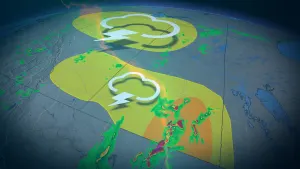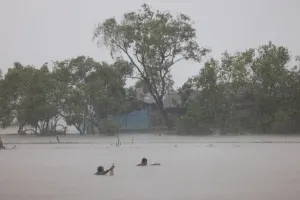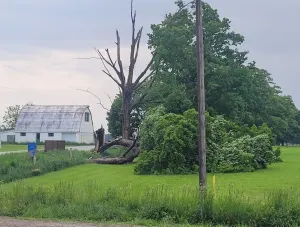
Emerald ash borer spread in Winnipeg slower than expected: Researcher, advocates
Winnipeg's ash trees may have longer to live, as local researchers are seeing signs of slower-than-expected spread of an insect that has decimated populations in other cities.
When the emerald ash borer beetle was first detected in Winnipeg in 2017, scientists warned it could wipe out the city's ash trees within a decade.
Since then, the bug has not spread as fast as feared, potentially buying more time for the city to protect existing trees and plant new ones.
SEE ALSO: Invasive species' staggering damage: $1.3 trillion since 1970
"We just don't know yet what is the reason behind what we foresee is probably a fairly slow kind of growth rate right now," said Richard Westwood, a professor in the department of environmental studies at the University of Winnipeg.
To date, the city has found emerald ash borers in 20 trees, all of them within five kilometres of the original 2017 detection in the Archwood neighbourhood in St. Boniface.
When it was first discovered, the city acted quickly to remove other trees in the surrounding area and followed up with an insecticide program, which has continued every year since, Westwood said.
Those removals, along with the application of an insecticide used to kill emerald ash borers in live trees, have "probably been fairly effective, at least initially," he said.
Winnipeg has approximately 350,000 ash trees, making up roughly a third of the city's tree canopy. Of those, 250,000 are on private property.

(Robert Short/CBC)
In 2023, the urban forestry branch identified approximately 1,000 ash trees for removal due to various factors, including insect pests, diseases, weather damage and general decline, City of Winnipeg spokesperson Ken Allen said in an email.
Another reason for the slow spread of the beetle could be Winnipeg's climate, said Patrick Carty, a certified arborist and program co-ordinator for Trees Winnipeg, a non-profit organization dedicated to promoting the benefits of trees in the city.
"The beetle is native to Siberia, so it is used to colder temperatures, but there is research being done right now to determine whether our specific climate is slowing its impact," Carty said.
The life cycle of the emerald ash borer beetle is typically one year, but there is some evidence that could be extending in more northerly regions, Westwood said.
WATCH BELOW: How trees get a 'second life' after a storm
"There's reports from elsewhere that in colder climates, more northerly climates, that a two-year life cycle is possible. So if it is a two-year life cycle, then that would definitely slow down the growth of emerald ash borer."
While the city's efforts to combat the beetle are solely on public land, private property owners are also anxiously watching their ash trees for signs of infestation.
Help private property owners: advocate
Shirley Forsyth, with the group Trees Please Winnipeg, says treating a tree against emerald ash borer costs hundreds of dollars and must be repeated every two years.
Some other Canadian cities, such as Peterborough, Ont., offer subsidies to homeowners to help cover the cost, a program that Forsyth would like to see replicated here.
"They're important for the environment, they are important for our health, they're important for our housing prices," Forsyth said.
Mature trees also provide shade, mitigating the effects of a warming climate, she said.
If the insect is spreading more slowly than initially feared, Forsyth holds out hope that the extinction of the city's ash trees is not a foregone conclusion.
"Eventually, hopefully someone will have a cure," she said.
At the least, it gives the city time to begin planting new, more diverse species of trees, Carty said.
"We've bought ourselves some time, but the best time to plant new trees would be right now," he said.
WATCH: This weed is 'every gardener's nightmare', how to manage it
Thumbnail courtesy of Brent Sinclair via CBC.
The story was written by Cameron MacLean and published for CBC News.









